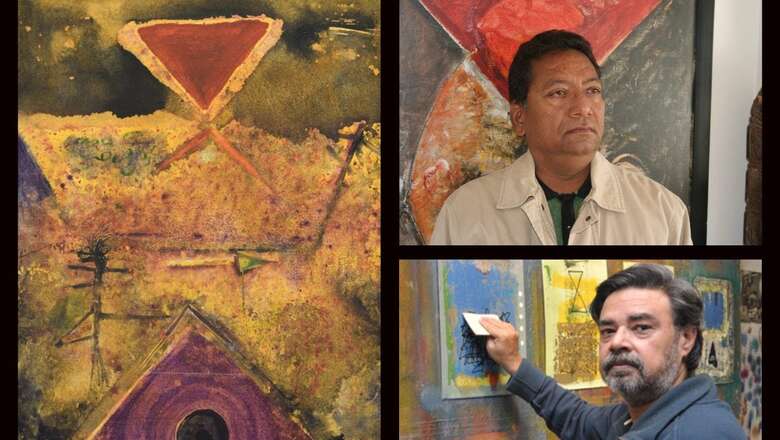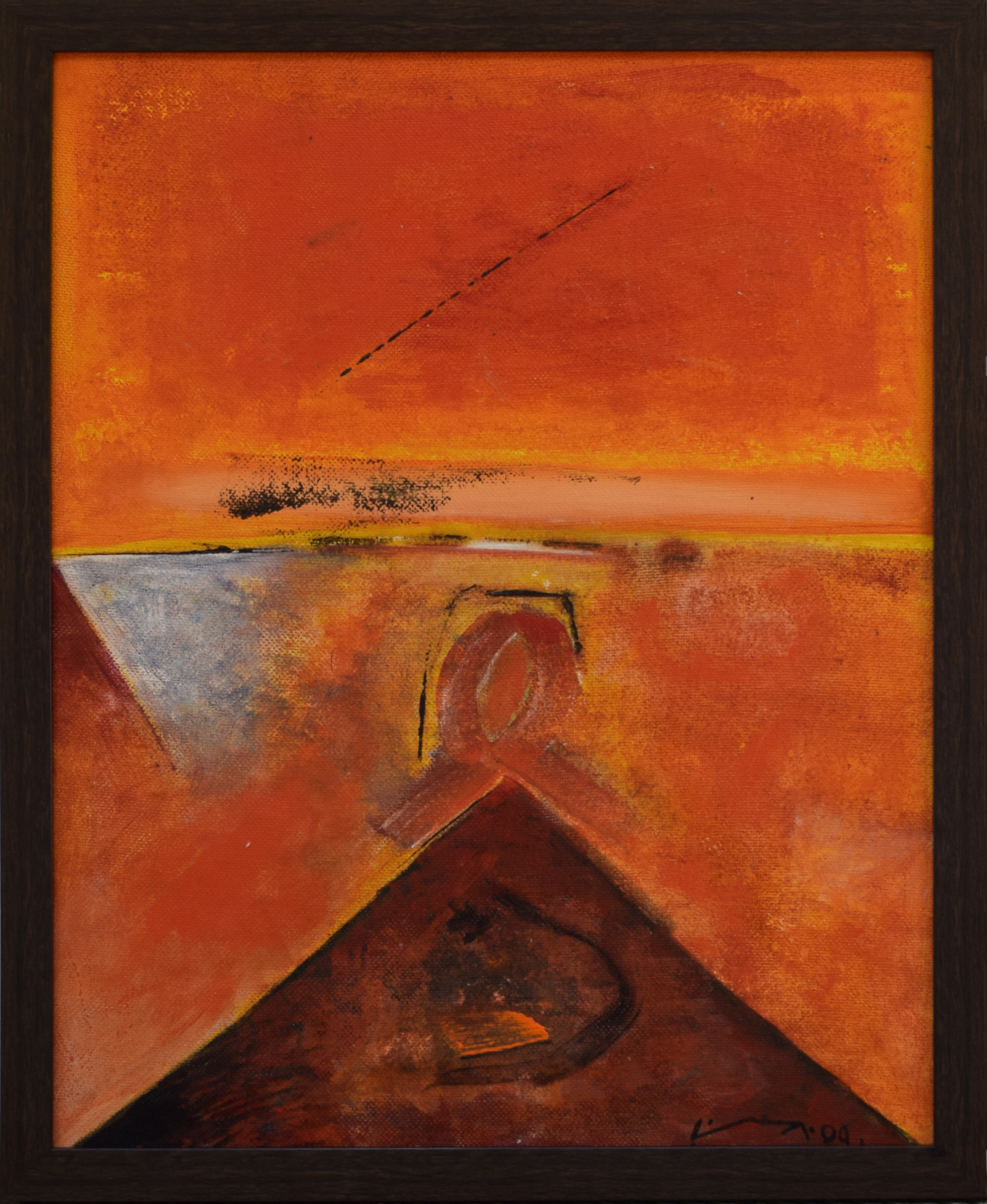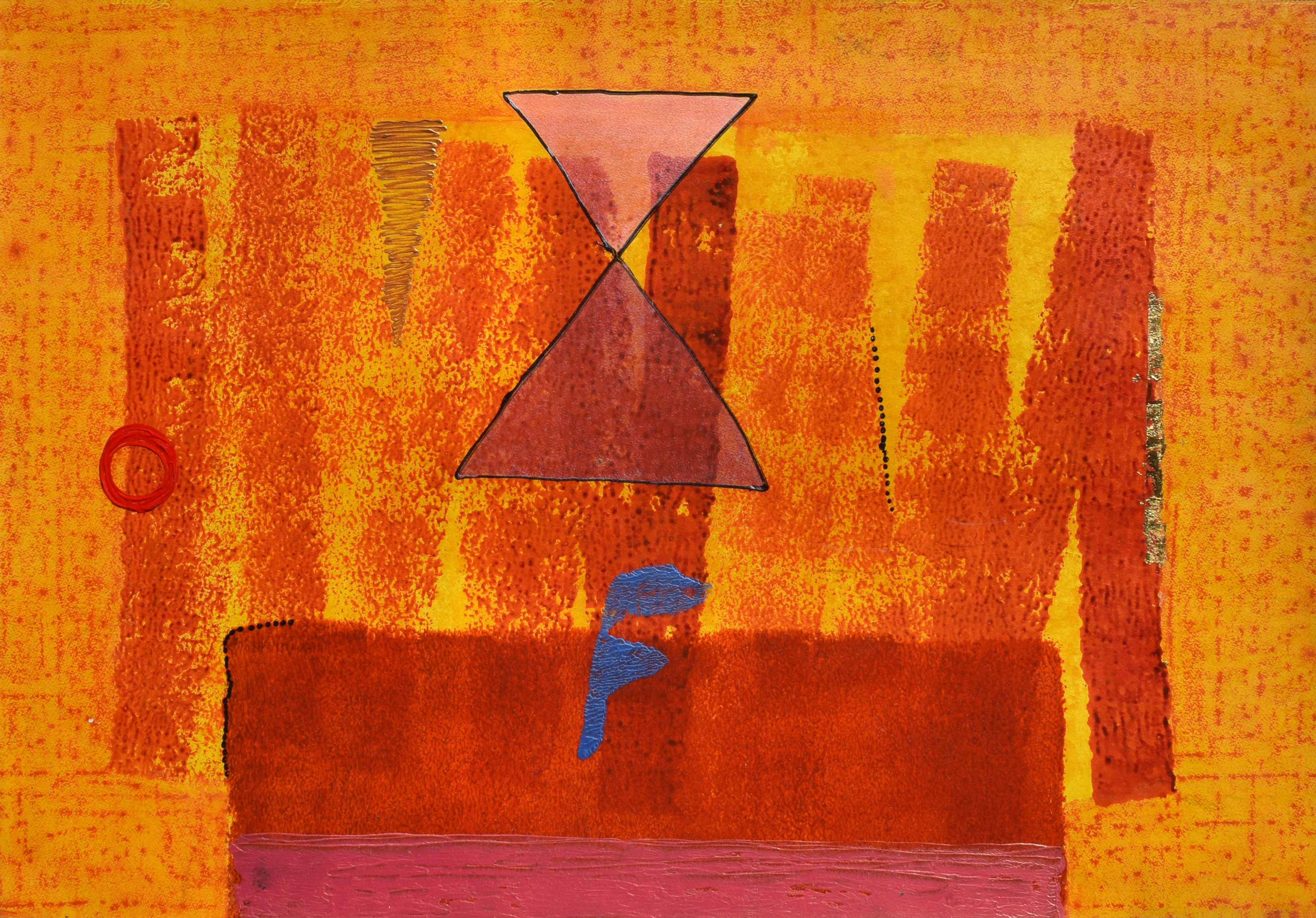
views
Vijay Shinde and Harshavardhana Swaminathan are two well-known but unique contemporaries from the 1958s whose works are on display at the returning Tao Art Gallery. The artwork will be on exhibit till June 15, 2023, on Thursday. This exhibit looks at how human culture has always had a sacred sense of symmetry, emerging from certain patterns, whether they be in iconic architecture, the human mind, spanning across cultures and generations, or just out in nature to be subconsciously imitated by humanity.

The exhibition ‘Sense, Symmetry & the Sacred’ explores the symmetry that may be found in nature, the human mind, patterns, and architecture. While Harshavardhana is self-taught and concentrates on tribal arts and symbolism, Shinde’s work draws inspiration from Indian ethos, philosophy, and values. The paintings are made of mixed media and feature patterns, geometric symbols, and vivid and dark colours that frequently mimic abstract art. The show encourages reflection on artistic expressions and opens up a variety of viewpoints on them.

Self-taught artist S. Harshavardhana has a preference for tribal art and symbols and has worked with abstract geometric forms, particularly inverted triangle constructions. Harshavardhana is best known for showcasing his artistic creations on richly textured yet colourful canvases. He carefully constrained the colour areas that violently cut into one another, creating brilliant artisticforms that blended in and, in a few apparent scars, giving his works a distinct character.

Excerpts from the conversation with Harshavardhana:
- What was the inspiration behind your works?Many things in nature, like mountains, trees, plants, flowers, rivers etc., inspire me in many ways. However, I cannot pinpoint one aspect and say that that particular aspect inspired me to make these paintings. Indian classical music, especially the Carnatic style, is another aspect that attracts me, and I am an avid listener. I usually play music while I paint. However, again, I blank my mind before I start a painting. There is a repeating motif of the triangle, which is there because I like the form, and it has no other significance.
- What is the ultimate sentiment you hope to echo with your abstract artworks?My paintings are not instruments to convey a message or sentiment! However, unknown people have approached me with comments like we acquired your work, and Peace has come into our home! If my paintings have a message, they should have a hundred messages!
Sanjana Shah who is the Creative Director of Tao Art Gallery, adds, “It gives me immense pleasure and pride in curating an experience that puts together the work of two unique artists, who were connected with the ‘symbols and patterns’ to weave an almost trance like process, a kind of deep meditation for any artist. Achieving nuance and intensity through their depictions and being rarely quiet will trigger an extraordinarily soulful and liberating outburst of emotions from within for each of its viewers, creating symmetry and the much-needed sense. Supposedly leading one into introspection, echoing total contrast, yet creating a sublime symmetry, the works of Vijay Shinde and Harshavardhana Swaminathan trigger a sensible, sacred space within.”
Conversation with Sanjana goes like:
- What led to this curatorial pairing between S. Harshavardhana & Vijay Shinde?It is surprising and incredible to see the similarities in the works and practices of these two artists! They represent a crucial transitory period of the last remaining years of Modern Indian Art where abstract art reigned supreme and symbolism was high. While today it is more about the concept and the thought that artists want to portray with a straightforward external narrative in mind, the works of these two artists came from a space of instinctive feeling and deep internal reflection. The synergy between the two showcases how they were similar in their spiritual approach to their art, and it is interesting to see how similar the results are in terms of colour palettes and forms. As a curator, it was fascinating to observe this, and I wanted to bring them together so we could see this dialogue happening in the gallery space!
- Can you please break down the title “Sense, Symmetry & the Sacred” for us?Since both these artists have been heavily influenced by their innate sense, and the shapes and symbols in their work are simple yet profound in terms of the layers, I felt a sense of sacredness associated with the art. In many ways, the abstract imagery in their works resembled familiar patterns in nature, with exact symmetry and dichotomy. It also contains the most basic shapes like triangles and circles, which again have been familiar patterns for humans, from our architecture to our daily objects. The resemblance gives a notion of some profound truth that lies within and around us but can only be sensed through reflection and presence. Both artists would let this sense of theirs guide them while creating their art, and that otherworldly, deep feeling is what I found relevant to emphasise in the title!
- If you had to describe the synergistic energy between the two artists, how would it read as?Questioning is profound and challenging but also peaceful and pleasing. It is very spiritual, positive and curious but also deeper and hard-hitting. Almost like a philosophical discussion between two creative minds on the concepts of the universe and everything we see around us! The works have an old, familiar and essential feeling, and each one emits strong vibrations. Some are more isolated and melancholy, while some are more welcoming and playful, but together, they come across as complete.




















Comments
0 comment